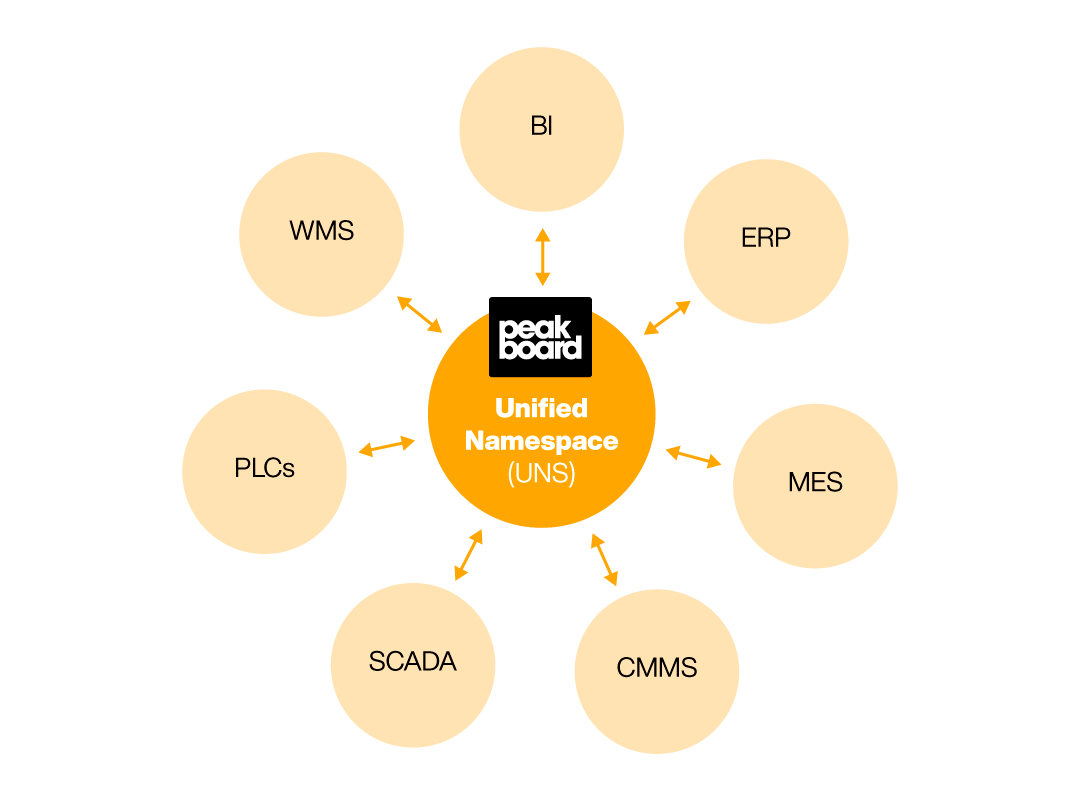
At its core, a Unified Namespace is a centralized, standardized data structure that aggregates and organizes information across an organization’s entire network. It serves as a universal data reference point or a ‘single source of truth’ for all connected devices and applications. This includes everything from Programmable Logic Controllers (PLCs), Supervisory Control and Data Acquisition (SCADA) systems, Human-Machine Interfaces (HMIs), Enterprise Resource Planning (ERP) systems and other IoT devices. By adopting a UNS, industries can ensure that every component within their operational ecosystem speaks the same ‘language’, facilitating seamless data interchange and interpretation.
To grasp the importance of a UNS, it’s essential to understand the roles of PLCs, SCADA, and HMIs in industrial automation. PLCs are the workhorses of the industrial world, tasked with controlling machinery and processes based on real-time data. SCADA systems, on the other hand, are designed to collect, monitor, and analyze data from various sources, including PLCs, providing operators with a comprehensive view of their systems. HMIs serve as the interface between humans and machines, offering a visual representation of operational data, controls, and alerts.
The challenge in traditional setups lies in the disparate nature of data communication and storage across these devices and systems. Each component typically operates within its silo, using proprietary protocols and data structures. This fragmentation leads to inefficiencies, increased risk of errors, and a lack of transparency across the operational chain. A Unified Namespace addresses these issues head-on by providing a common data model and communication standard, such as MQTT (Message Queuing Telemetry Transport), a lightweight messaging protocol designed for minimal bandwidth consumption and real-time data exchange.
Peakboard’s Advanced Data Application’s exemplifies how a UNS can be implemented to harness these benefits. This powerful platform allows industries to aggregate data from diverse sources, including PLCs, SCADA systems, HMIs, ERPs, and IoT devices, into a unified, real-time visual management system. By leveraging the MQTT protocol and other data integration techniques, Peakboard simplifies the creation of a Unified Namespace, ensuring data is not only collected but also visualized in an intuitive, actionable manner.
This approach empowers operators, managers, and decision-makers with a holistic view of their operations, enabling them to identify trends, pinpoint inefficiencies, and make informed decisions swiftly. Moreover, Peakboard’s focus on user-friendly design and customizable applications ensures that the insights delivered through the UNS are accessible and relevant to all stakeholders, regardless of their technical expertise.
In the landscape of Industry 4.0 and IIoT, a Unified Namespace is not just a technological advancement; it’s a strategic imperative. By facilitating real-time data integration, enhancing operational efficiency, and offering unparalleled scalability and analytical capabilities, a UNS stands at the heart of modern industrial automation. Platforms like Peakboard’s Advanced Data Application’s play a pivotal role in realizing the full potential of a Unified Namespace, bridging the gap between complex data structures and actionable insights. As industries continue to navigate the challenges of digital transformation, the adoption of a Unified Namespace will undoubtedly be a cornerstone of success.
Chris is a dedicated member of the sales team at Peakboard, where he combines his enthusiasm for technology with a commitment to helping customers achieve data-driven solutions in manufacturing and logistics.